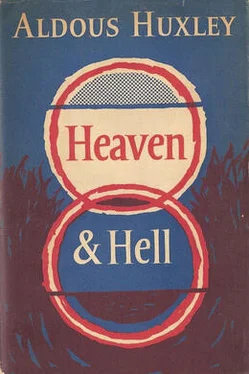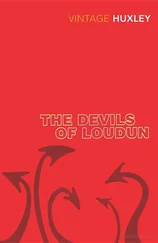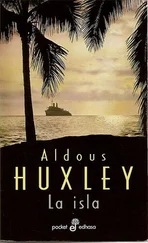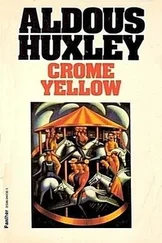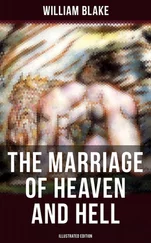Our ability to project a powerful beam of light has not only enabled us to create new forms of visionary art; it has also endowed one of the most ancient arts, the art of sculpture, with a new visionary quality which it did not previously possess. I have spoken in an earlier paragraph of the magical effects produced by the floodlighting of ancient monuments and natural objects. Analogous effects are seen when we turn the spotlights on to sculptured stone. Fuseli got the inspiration for some of his best and wildest pictorial ideas by studying the statues on Monte Cavallo by the light of the setting sun, or, better still, when illuminated by lightning flashes at midnight. Today we dispose of artificial sunsets and synthetic lightning. We can illuminate our statues from whatever angle we choose, and with practically any desired degree of intensity. Sculpture, in consequence, has revealed fresh meanings and unsuspected beauties. Visit the Louvre one night, when the Greek and Egyptian antiquities are floodlit. You will meet with new gods, nymphs and Pharaohs, you will make the acquaintance, as one spotlight goes out and another, in a different quarter of space, is lit up, of a whole family of unfamiliar Victories of Samothrace.
The past is not something fixed and unalterable. Its facts are re–discovered by every succeeding generation, its values re–assessed, its meanings re–defined in the context of present tastes and preoccupations. Out of the same documents and monuments and works of art, every epoch invents its own Middle Ages, its private China, its patented and copyrighted Hellas. Today, thanks to recent advances in the technology of lighting, we can go one further than our predecessors. Not only have we reinterpreted the great works of sculpture bequeathed to us by the past; we have actually succeeded in altering the physical appearance of these works. Greek statues, as we see them illuminated by a light that never was on land or sea, and then photographed in a series of fragmentary close–ups from the oddest angles, bear almost no resemblance to the Greek statues seen by art critics and the general public in the dim galleries and decorous engravings of the past. The aim of the classical artist, in whatever period he may happen to live, is to impart order to the chaos of experience, to present a comprehensible, rational picture of reality in which all the parts are clearly seen and coherently related, so that the beholder knows (or, to be more accurate, imagines that he knows) precisely what's what. To us this ideal of rational orderliness makes no appeal. Consequently, when we are confronted by works of classical art, we use all the means in our power to make them look like something which they are not, and were never meant to be. From a work, whose whole point is its unity of conception, we select a single feature, focus our searchlights upon it and so force it, out of all context, upon the observer's consciousness Where a contour seems to us too continuous, too obviously comprehensible, we break it up by alternating impenetrable shadows with patches of glaring brightness. When we photograph a sculptured figure or group, we use the camera to isolate a part which we then exhibit in enigmatic independence from the whole. By such means we can de–classicize the severest classic. Subjected to the light treatment and photographed by an expert camera man, a Pheidias becomes a piece of Gothic expressionism, a Praxiteles is turned into a fascinating surréaliste object dredged up from the ooziest depths of the subconscious. This may be bad art history, but it is certainly enormous fun.
Painter in ordinary first to the Duke of his native Lorraine and later to the King of France, Georges de Latour was treated, during his lifetime, as the great artist he so manifestly was. With the accession of Louis XIV and the rise, the deliberate cultivation, of a new Art of Versailles, aristocratic in subject–matter and lucidly classical in style, the reputation of this once famous man suffered an eclipse so complete that, within a couple of generations, his very name had been forgotten, and his surviving paintings came to be attributed to the Le Nains, to Honthorst, to Zurbaran, to Murillo, even to Velasquez. The rediscovery of Latour began in 1915 and was virtually complete by 1934, when the Louvre organized a notable exhibition of 'The Painters of Reality.' Ignored for nearly three hundred years, one of the greatest of French painters had come back to claim his rights.
Georges de Latour was one of those extroverted visionaries, whose art faithfully reflects certain aspects of the outer world, but reflects them in a state of transfigurement, so that every meanest particular becomes intrinsically significant, a manifestation of the absolute. Most of his compositions are of figures seen by the light of a single candle. A single candle, as Caravaggio and the Spaniards had shown, can give rise to the most enormous theatrical effects. But Latour took no interest in theatrical effects. There is nothing dramatic in his pictures, nothing tragic or pathetic or grotesque, no representation of action, no appeal to the sort of emotions which people go to the theatre to have excited and then appeased. His personages are essentially static. They never do anything; they are simply there in the same way in which a granite Pharaoh is there, or a Bodhisattva from Khmer, or one of Piero's flat–footed angels. And the single candle is used, in every case, to stress this intense but unexcited, impersonal thereness. By exhibiting common things in an uncommon light, its flame makes manifest the living mystery and inexplicable marvel of mere existence. There is so little religiosity in the paintings that in many cases it is impossible to decide whether we are confronted by an illustration to the Bible or a study of models by candlelight. Is the 'Nativity' at Rennes the nativity, or merely a nativity? Is the picture of an old man asleep under the eyes of a young girl merely that? Or is it of St Peter in prison being visited by the delivering angel? There is no way of telling. But though Latour's art is wholly without religiosity, it remains profoundly religious, in the sense that it reveals, with unexampled intensity, the divine omnipresence.
It must be added that, as a man, this great painter of God's immanence seems to have been proud, hard, intolerably overbearing and avaricious. Which goes to show, yet once more, that there is never a one–to–one correspondence between an artist's work and his character.
At the near–point Vuillard painted interiors for the most part, but sometimes also gardens. In a few compositions he managed to combine the magic of propinquity with the magic of remoteness by representing a corner of a room, in which there stands or hangs one of his own, or someone else's, representation of a distant view of trees, hills and sky. It is an invitation to make the best of both worlds, the telescopic and the microscopic, at a single glance.
For the rest, I can think of only a very few close–up landscapes by modern European artists. There is a strange 'Thicket' by Van Gogh at the Metropolitan. There is Constable's wonderful 'Dell in Helmingham Park' at the Tate. There is a bad picture, Millais' 'Ophelia,' made magical, in spite of everything, by its intricacies of summer greenery seen from the point of view, very nearly, of a water rat. And I remember a Delacroix, glimpsed long ago at some Loan Exhibition, of bark and leaves and blossom at the closest range. There must, of course, be others; but either I have forgotten, or have never seen them. In any case there is nothing in the West comparable to the Chinese and Japanese renderings of nature at the near–point. A spray of blossoming plum, eighteen inches of a bamboo stem with its leaves, tits or finches seen at hardly more than arm's length among the bushes, all kinds of flowers and foliage, of birds and fish and small mammals. Each small life is represented as the centre of its own universe, the purpose, in its own estimation, for which this world and all that is in it were created; each issues its own specific and individual declaration of independence from human imperialism; each, by ironic implication, derides our absurd pretensions to lay down merely human rules for the conduct of the cosmic game; each mutely repeats the divine tautology: I am that I am.
Читать дальше
